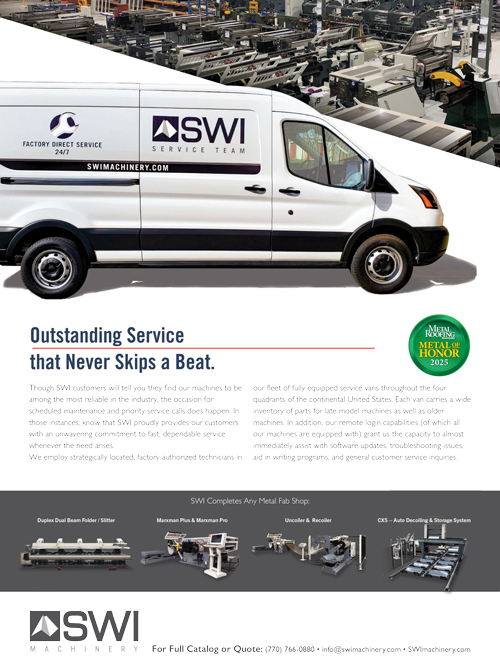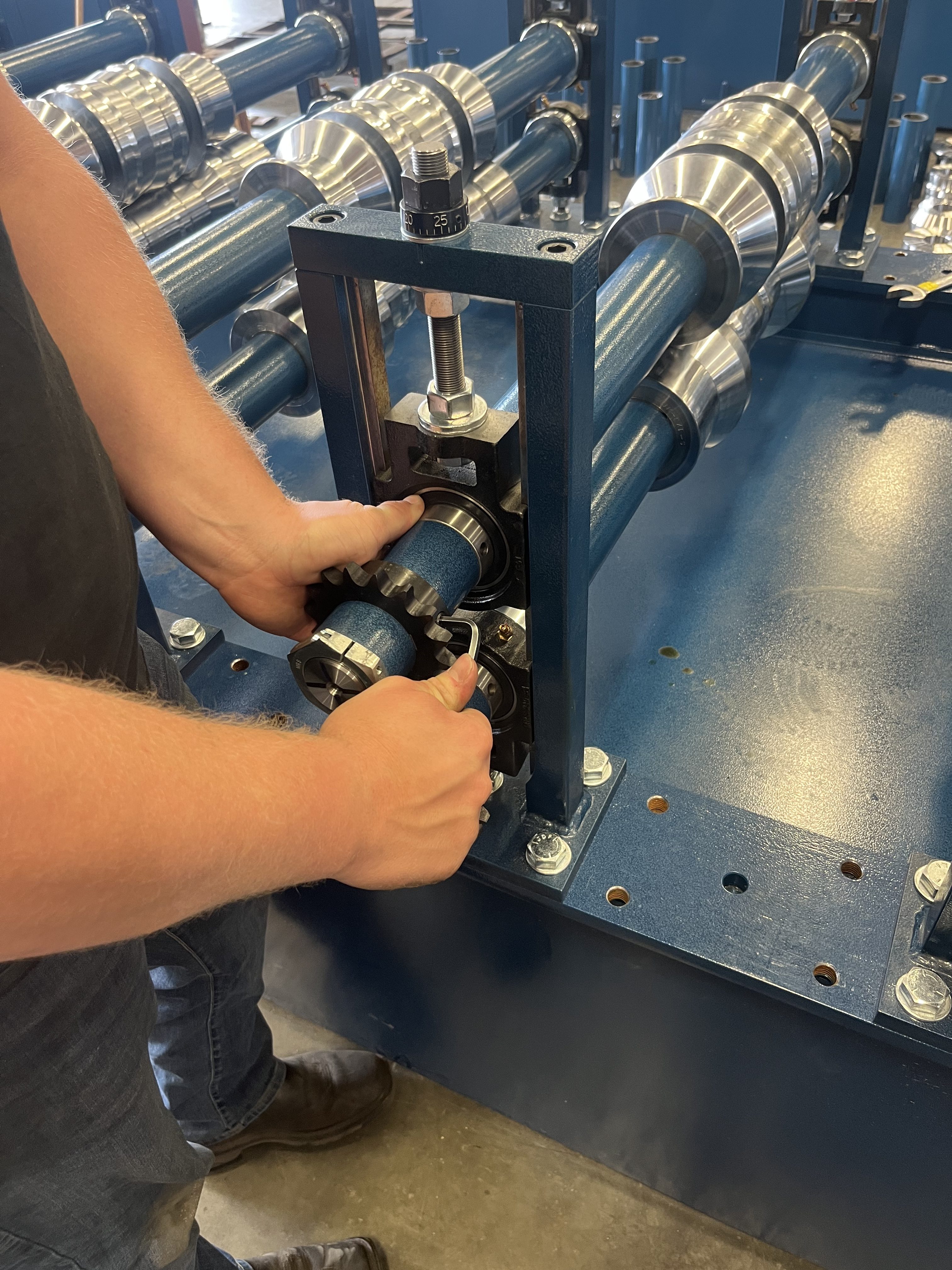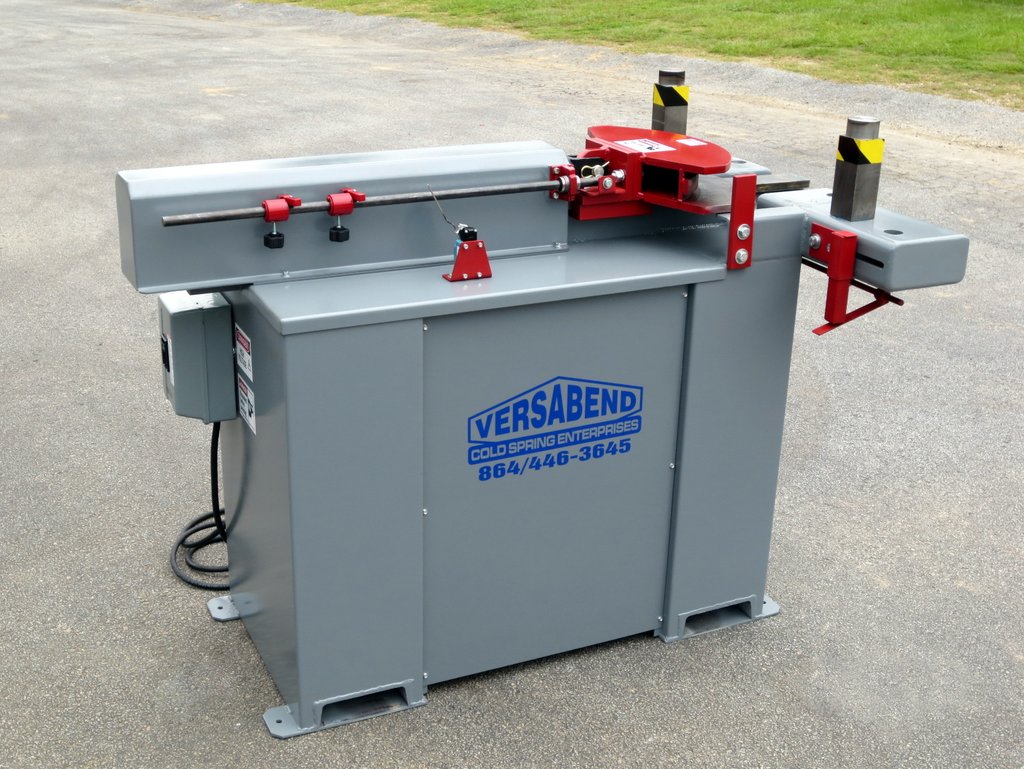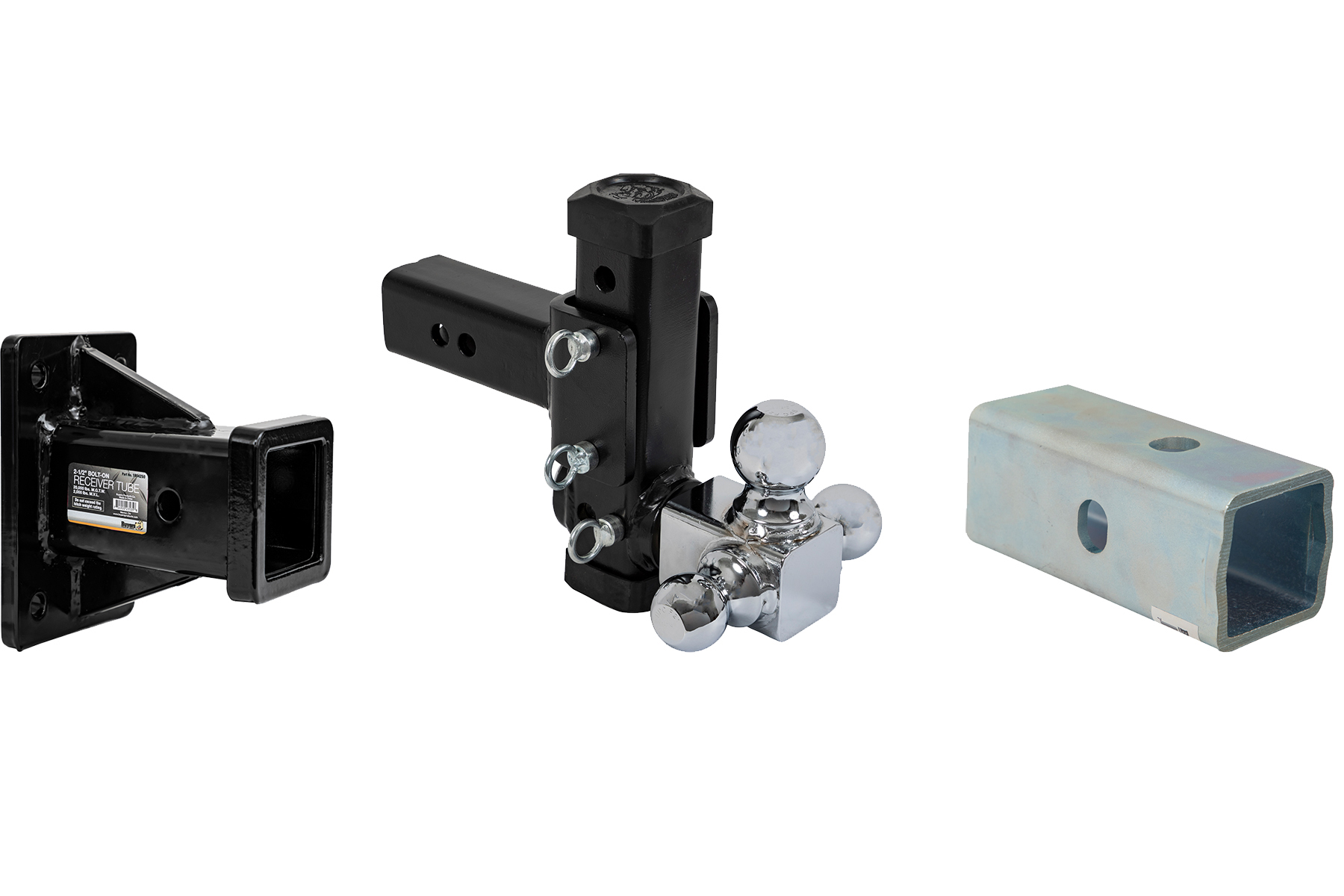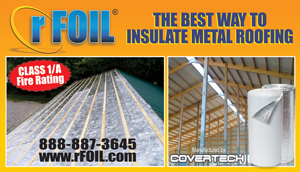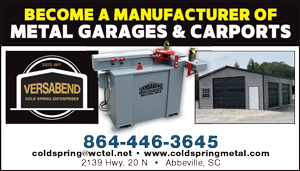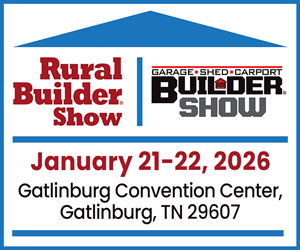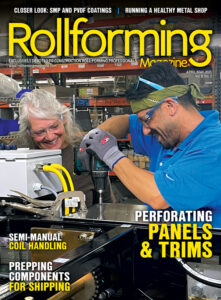By Sharon Thatcher
Buying a new roll former is not a cheap investment, but buying a used machine can be equally expensive if you don’t get a good one. Old versus New, it’s a decision that can keep you up at night, but there are ways to objectively weigh your options.
Bill Griffin, an owner and partner of Metal Rollforming Systems (MRS), offers some pros and cons of each.
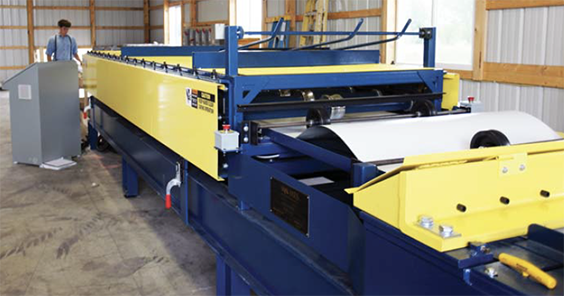
Buying New
“Obviously there are some advantages with a new machine,” Griffin noted. “With a new machine you’re going to get the factory warranty, factory support, and the factory technician coming out to your site,” he said.
By contrast, with a used machine, you probably won’t get a warranty. “Depending on the manufacturer you may or may not get tech support,” he said, adding: “You want to make sure you can still get the components, still get the support before you buy a used machine.”
Buying new, you will also have the opportunity to inspect everything and to have your profile configured exactly how you want it. “Everything is built for your application.” With a used machine “you might be trying to make something fit your application that’s not necessary with what you need,” he cautioned.
Another plus is the new machine’s ability to work well — at maximum efficiency — with components that were designed specific to that machine. “When you get an uncoiler, a shear, a roll former and control, all new, they’re all designed to run at the same speed, communicate with each other and to integrate with each other,” Griffin said. “Not necessarily will that be the same case with used equipment: you might find an uncoiler from one vendor, and a roll former from another vendor, and the controls from a third vendor.” Integrating them could prove challenging.
Another advantage to a new roll former is the ease in going from one deck to two as your business grows. “If you get a single deck with the intent to add to your other profiles for versatility, all that can be spec’d into a new machine, whereas the used machine, it is what it is,” Griffin said. Adding a deck may not be an option.
Also with a new machine, you get the latest in die technology that can handle the varying grades of steel that run through your machine. “What you’re seeing right now in the coil industry … with grade 80, there’s a lot of recycled material. There’s not a lot of virgin raw steel produced anymore. So that’s driving the carbon content up … the steel is getting harder,” Griffin noted. Older tooling may not be able to handle that harder steel, resulting in improper bends in the panel.
But the biggest drawback to a new machine is the expense ($200,000 and up) and the wait time for production (from weeks to months).
Tantalizing is the lower cost of a used machine, and many roll-forming businesses do well with used machines. Proper inspections and a lifecycle cost analysis can help you decide if a used roll former is a wise decision or not.
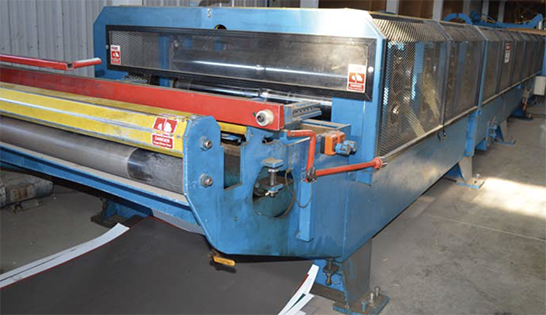
Buying Used
A quick note that finding a good used roll former these days is not easy. The roll-forming industry is growing, and the good machines go fast. Buyer beware cannot be emphasized enough.
“When you buy used equipment, the reason you want to buy it is to save money,” Griffin said. “That’s the whole reason, the whole crust to buying used. You’re buying used to save money and possibly to expedite [arrival], so you can have it online sooner.” It’s still a major purchase, so make sure to get your money’s worth.
Griffin said inspection prior to the purchase is key and should include inspecting for value, life expectancy, condition, and lifecycle cost. He offers these pointers:
- Evaluate first what’s included in your purchase.
“If you’re going to get a used roll former, and you have to go out and buy an uncoiler, a shear, or other pieces to complete this equipment, odds are that costs are going to increase quickly,” he said. “So you have this used piece of equipment, now you’ve got to adapt a shear for it, or add control systems for it; it all takes labor in the field — which is expensive. It takes customizing — that takes time and money.
If you are getting additional equipment, where did it come from? “If you get an uncoiler, you also want to look at the shear, the coil cart, the in-feed table, and the roll-former controls. Is this all included as one operational package or is this just a collection of stuff somebody’s had sitting over in a corner?” Griffin asks. - Evaluate the condition of the machine. Take the time to go over the machine carefully.
“Like buying any used piece of equipment, there’s bearings, power transmission components, electronics, hydraulics, all sorts of things to inspect,” he said. “You can be wading into some murky waters.
“You want to know if this machine is going to last,” he continued. “Is this machine going to service you well? Is it going to accomplish what you want?”
Seeing the machine under power prior to purchase is one of the best ways to evaluate its condition. “Anytime a machine is not under power, I always suggest to the customer that you take that machine at a discount. Unless you can see that machine run with your own eyes, you don’t know what it’s going to do,” Griffin said.
By seeing it run under power you can assess its performance. “Do the components function the way they should? Does the coil reel run — does it turn on? Does the shear function — does it run proper and consistent lengths? All that will tell you what type of condition it’s in electrically and mechanically. You’re looking for those key indicators to tell you if this line is going to work when you bring it [into your line] and under power,” he emphasized.
Only under power can you inspect the tooling, the links, and the condition of panels running off the line.
“The most critical part of a roll former is its tooling,” Griffin said. “There’s a lot of costs in the tooling and the tooling makes the product that you’re going to sell. So if you’re tooling is worn or damaged, then the product you’re going to try to sell is not going to be competitive in the market.”
In your evaluation, you’re going to want to see how the profiles match top and bottom. “Are there wear points in the radiuses? Are there dies scratched, or is the chrome worn off?”
If the dies touch, they will pit and damage themselves with the contact of two hard surfaces coming together. The result: “You can see where [the tooling is] pitted, it’s rough, rusted, that’s caused by the dies contacting themselves,” Griffin described. “An operator can misadjust it, bring the top deck down and touch the bottom shafts, and that can really hurt a set of tooling. It starts scratching paint, and you have all sorts of issues. So really pay attention to the condition of your tooling.”
Why is tooling so important? “If you’ve got to replace tooling, you’re going to have a minimum cost of $30,000-40,000 to replace the tooling, and up to over $100,000 if we have to do shafts and dies, with labor included,” he said.
Inspect the panels after they run through the roll former. Panels should lie flat. If not, it’s indicative of one of two things: either damage to the dies, or a misadjusted machine. “If it’s a machine adjustment, that’s simple,” he said. But know before you buy if it’s a simple adjustment or a major fix.
Another thing to look for in the panel is coverage consistency. Griffin offers this example: “If your panel is 36 inches overall, 9 inches between the ribs … is the front of the sheet different from the back of the sheet? If it’s wide or narrow the machine may need shim work; does it need adjustment? And what about the overlap? Does it seal well? When you take the two sheets, put them over each other, checking that lap, is that lap good … is this panel good, can I sell this panel, or do I need to work on it?”
You want to know the root cause of any inconsistency. - Can You Still Get Parts and Support Services?
Before you buy that used machine — knowing you may need to work out some kinks — contact the manufacturer of that machine. “Now you’re going to know if the support is still available,” Griffin said. “Say, ‘hey I’m looking at buying this machine, here’s the serial number, here’s the tooling number, what can you tell me about this?’ And they’re going to look in their records and say, ‘I can’t support this or I can support this, and this is how much it would cost to retool it.’”
For roll formers built by companies still in business, you may be able to find parts and most likely get some service questions answered. This particularly holds true for machines that have been reconditioned and sold by the original manufacturer, but, Griffin warned, “some older roll formers — maybe somebody’s home-built project — can be hard to get parts for. You’re going to be on your own when it comes to supporting that piece of equipment.”
And, is the manufacturer still in business? “There’s a lot of value in tech support,” Griffin said. “There’s a good chance at some point you’re going to have to call tech support, even if it’s just basic support.” He said MRS tries to help owners of its machines no matter where they were purchased. “We’d still offer that [support], many other companies would still offer that, as long as they’re still in business.” RF


